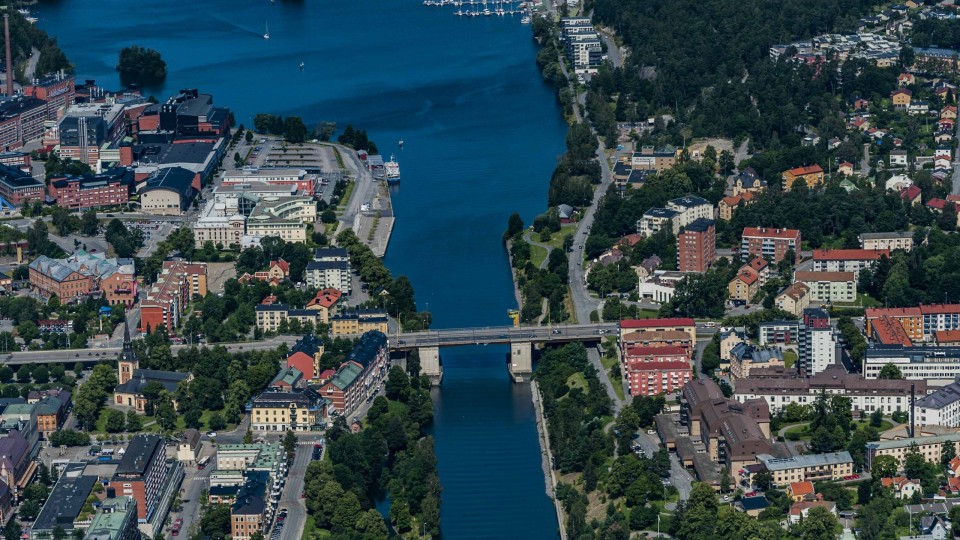The food system is a complex network of processes including the growing, production and distribution of food as well as what people consume and eventually the waste and byproducts they produce. Each actor within this system, from farmers and pro-ducers to retailers, plays an essential role. However, miscommunication and unaligned goals can end up in fragmented actions and barriers. To overcome these challenges and enhance the food system’s performance, it is necessary to foster stronger con-nections between stakeholders.
This concept focuses on effective communication to convince actors in the food system to connect and find a way to do it in a time-effective manner. By optimizing communication strategies, stakeholders can make informed joint decisions, share know-ledge and allocate resources effectively. Key actions that support these endeavours include creating a communication plan for new stakeholders based on an existing strategy and crafting a strong clear narrative when communicating with all stakehold-ers. Additionally, expanding the focus to include environmental currency and KPI’s can be explored to engage and resonate with a wider audience beyond just the financial aspects. Ultimately, the goal is to devise a roadmap and support system that fosters information flow and connection within the food system.
How to do it
Suggested actions
- Develop a time-effective communication plan based on existing strategies to facilitate connections and collaboration among actors in the food system.
- Incorporate environmental currency and key performance indicators in the communication plan to highlight sustainability aspects alongside financial considerations.
- Engage stakeholders through round-table discussions or workshops to gather their input and foster collaboration.
- Design efficient agendas for these engagement sessions to optimise productivity and time management.
- Craft a compelling and concise narrative when communicating with stakeholders to effectively convey the purpose and goals of the roadmap and support system for the food system.
Local adaptations
Södertälje, Sweden
Using the municipal Food Supply Strategy as a starting point, the content is converted into a communication plan which paves the way for the adoption and implementation of the strategy within the municipal departments and com-panies. The stakeholders have defined three focus areas.
- Municipal planning and management – land, water, energy, waste and infrastructure
- Business sector and municipal operations – production
- Crisis Preparedness – Risk Management and Collaboration Models
Södertälje municipality has also identified a growing demand for lectures, workshops and dialogue from other muni-cipalities and government agencies eager to create similar strategies or incorporate food planning into their process-es. There is also a growing demand from the private sector. While the primary focus of the concept is internal commu-nication and implementation of the food supply strategy within the municipal organisation, external communication and media attention provides an opportunity to spread awareness at the same time as it strengthens internal commu-nication.
Satakunta, Finland
Food cluster organisations have their own communication strategies and methods in Satakunta region. With this con-cept Prizztech aims to find new ways to ensure coordinated external communication. The idea is to create a common shared communication strategy for food clusters of the whole region. The communication strategy work is carried out in the context of existing food sector events and forums. The optimised communication strategy and actions imple-menting it will be executed in close cooperation with Regional Council of Satakunta as they are the regional authority, regional strategy owner and organiser of the food cluster RDI-forums.
The optimising of the Satakunta food cluster communication strategy started with situation analysis where the main stakeholders were identified. Then the process continued to define objectives and identify target audiences, which in this case are Baltic Sea region public sector decision makers and expert organisations. Core messages for communica-tion were formed in the workshop. Communication channels were selected based on ideas developed jointly. Planning of actions and finally implementing the strategy will take place in the course of time. The first version of the joint com-munication material was launched in December 2024. The communication material consists of PowerPoint presenta-tions and articles on the websites of the Satakunta Food Cluster organisations.
KISMET Actions & Tools
Södertälje municipality´s Food Supply Strategy (Södertälje/Beras)
Södertälje Municipality has developed an innovative Food Supply Strategy for public organisations in collaboration with the BERAS initiative.
How to guide: Food Supply Strategy for public organisations
Food supply is a critical issue for cities across Europe and the world. With challenges such as climate change, population growth, and the vulnerabilities of global supply chains, municipalities must take a proactive approach to ensure their residents have consistent access to safe, nutritious, and affordable food now and in the future.
This guide is designed to help city officials develop a comprehensive food supply strategy that addresses local needs, builds resilience, and promotes sustainable practices.
Why this guide matters
This guide outlines a general, step-by-step process for creating a food supply strategy, which can ba adapted to the needs of your organisation. Whether you’re addressing short-term crises like supply chain disruptions or planning for long-term food supply and landuse planning, the guide provides practical advice, key questions, and real-world examples from cities that have successfully implemented similar strategies. Each step builds on the previous one to create a holistic and effective approach to writing a food supply strategy.
How to Use This Guide
- Understand the Process: The guide is divided into 15 steps, each with its own introduction, key questions to ask, and example answers. You’ll also find considerations for each step to help you think critically about how the strategy applies to your specific context.
- Navigate Step by Step: Each step focuses on a different aspect of the food supply strategy, from understan-ding your legal framework and identifying roles and tools, to securing funding and communicating with stakeholders.
While the steps are presented in a logical sequence, feel free to skip to the sections most relevant to where you are in the process.
‘Politics you can eat’ Insights from the Implementation of Södertälje Municipality’s Food Supply Strategy
This thesis aims to assess the progress of the implementation of Södertälje municipality’s food supply strategy, as well as understanding key barriers and catalysts to implementing sustainable and resilient food systems at a local level. Through semi-formal interviews and a literature review, key insights into food systems governance were discerned. The food supply strategy of Södertälje municipality has begun to be implemented. However, barriers have occurred that have caused the implementation to be slower than anticipated. These barriers are lack of communication regarding the roles and responsibilities within the municipality, co-ordinational issues, the boundaries of municipal authority, a lack of internal alignment, a lack of time and resources, and too few follow-ups. However, these have been offset by catalysts that can help to navigate how implementation can be reme-died in the future. These catalysts are champions of policy, a strong policy base and history within the municipal-ity, and political support. The thesis concludes by asserting that increased communication of the strategy, and the clear delegation of goals and responsibilities would enhance implementation in the future.
Key factors of joint communication identified (Satakunta, Prizztech)
The videos below are integral part of the Optimizing Communication Strategies concept, piloted in Satakunta. As part of this initiative, they produced a series of videos designed to showcase Satakunta’s food cluster, its key development themes, and RDI (Research, Development, and Innovation) activities. In the videos, representatives of the Regional Council of Satakunta, the Leader Joutsenten reitti, Business Finland and Centres for Economic Development, Transport and the Environment (ELY Centres) introduce their activities.
The communication strategy encompasses a range of materials, including videos, a PowerPoint presentation, articles for the website, and social media content. These materials are collaboratively developed with various organizations, aiming to enhance Satakunta’s profile as a prominent food province.
The target audience includes cities, municipalities, and development and expert organizations across the Baltic Sea region. The primary objective is to create a cohesive set of communication tools that facilitate the presentation of Satakunta’s food cluster. Once finalized, these resources will be readily available for all organizations within the Satakunta food cluster to use.
Related knowledge
Development Programme for the Food Sector in South Savo for 2021–2027 prepared in URAKKA-project
The vision of the development programme for the food sector in South Savo is “responsible, successful and resilient food sector in South Savo”. The development programme’s measures have been divided into five themes: competence; food communication and education; added value from nature and local products; resilience and responsibility; and new operating models. The programme has been prepared to give a hared development direction to all food operators in South Savo.
FIT4FOOD2030 > Communication tools
The Knowledge Hub is a growing online repository of tools for transformation developed to facilitate future-proofing Europe’s food systems through research and innovation. Browse or search through a number of tools and guidelines developed and tested by the FIT4FOOD2030 project’s City Labs, Food Labs, and Policy Labs. The tools and guidelines cover a wide range of purposes relevant for optimising communication strategies, e.g. Preparing for Communication with Stakeholders and Designing a Communication Strategy.
Food Cluster Hamburg
The Food Cluster Hamburg has been created to develop a sustainable food cluster in Hamburg in cooperation with the metropolitan region. The study report offers i.a. guidelines for the development of the Food Cluster Hamburg and recommendations for actions.
Food Supply Strategy for Södertälje Municipality
The goal of this strategy is to secure a good supply of food for Södertälje municipality’s growing population with safe, healthy, and sustainably produced food in sufficient quantities, both now and in the future.
Södertälje Food Supply Strategy aims to centralise the importance of food-planning and supply to municipal process-es. The strategy serves as a guide in all municipal planning processes and operational management to ensure a robust food system and supply. The Food Supply strategy also aims to facilitate cooperation, dialogue, and consensus among different actors in the food system, including public, private, and non-profit organisations.
It does this through three focus areas:
- Land-use and urban planning.
- Private food sector and municipal operational activities.
- Crisis management and preparedness.
Guidelines for Organising an Innovation Co-Creation Laboratory Online in order to gradually eliminate the poor cooperation between entrepreneurs and researchers
In order to gradually eliminate the poor cooperation between entrepreneurs and researchers, the Vidzeme Planning Region in cooperation with Riga Technical University’s Design Factory implemented an experimental event in 2020: The Innovation Co-Creation Laboratory (ICL). It sought solutions for the development of sustainable food packaging. These guidelines aim at sharing the experience and lessons learnt from organising the first ICL in Vidzeme and pro-viding practical advice on how to implement such activities as successfully as possible in the future.
Mistra Food Futures. Swedish food strategy 2.0
The Swedish research programme Mistra Food Futures gathers food system researchers from various disciplines. To contribute insights to the new version of the Swedish Food Strategy currently under development (2023) researchers at Mistra Food Futures have issued a Policy Brief. They conclude that increased sustainability strengthens the safety and competitiveness of all actors in the food chain. One starting point is therefore to combine strategies for transition to sustainability with strategies for preparedness and resilience.
Responsible food services development program (Ruokapalvelujen vastuullisuus näkyväksi)
Development program for responsible food services, that supports public food services in implementing strategic and concrete sustainability work. There are ten food service operators involved, who will create and develop their own sustainability plan during the project. During the development program, seven workshops will be organised with themes such as procurement, menu planning, customer needs, well-being at work, communication, and sustainability reporting.
Organic Cuisine Label Denmark
The Organic Cuisine Label is a free state-controlled labelling scheme for public or private eateries, showing the total share (in %) of organic raw ingredients and beverages used in preparing the entire menu.




